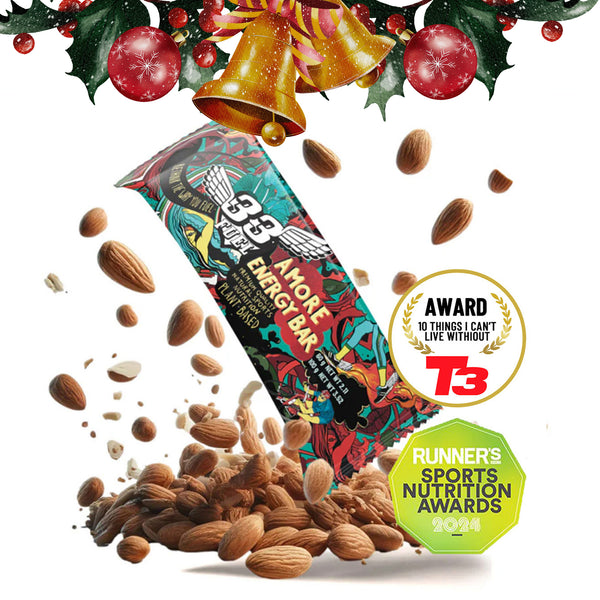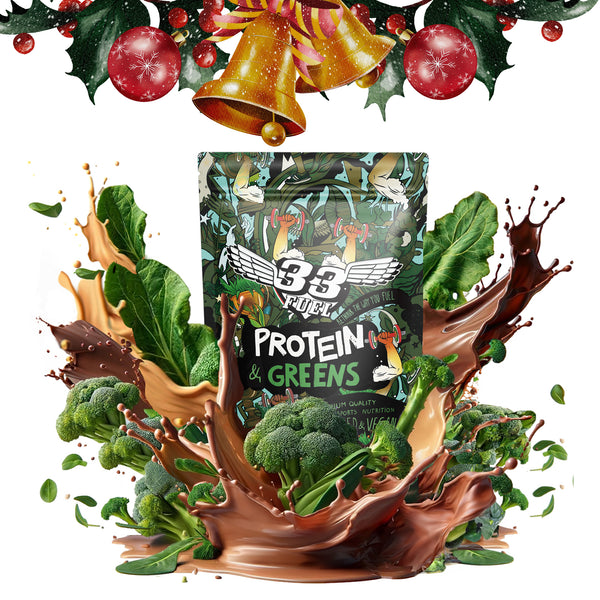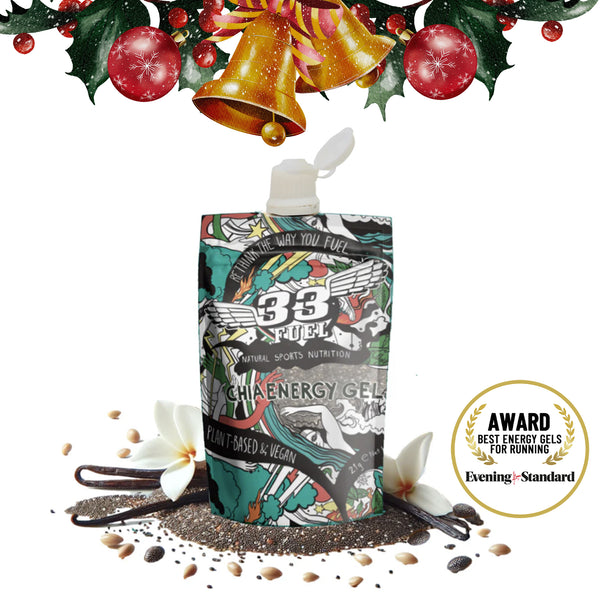[Guide] Perfect Marathon Pacing
![[Guide] Perfect Marathon Pacing](http://www.33fuel.com/cdn/shop/articles/33fuel_running_during_lockdown_-_visualise_the_finish_line_3be03daf-9181-469d-b73b-ef78b293de70.jpg?v=1597412678&width=1600)
In this year’s London Marathon, only a handful of runners raced to anything like their potential because their marathon pacing was off. And it can’t all be blamed on the hot weather…
The first few yards of a marathon are pumped with adrenaline, nervous energy and fully-loaded fuel stores. And they can destroy a race that will take hours.
It shouldn’t happen.
Pace perfectly with award winning marathon nutrition
Surely every conceivable piece of wearable tech, planning of military precision and a mountain of cautionary pre-race advice will stop you becoming swept away with a tide of humans and their combined emotions?
The stats say no.
Anyway, you tell yourself, even if you do go off a bit quick it’ll be easy to resurrect, right?
Sounds reasonable, but again, the stats say: ‘no chance’.
Start too fast, the mind plays tricks and your great hopes will soon dissolve in a sweaty mess.

How too many runners start their marathons…
The first few miles, provided you’ve not rolled out of bed minutes earlier and are still dozy, will feel ridiculously easy.
So they should. And the steadier a runner you are the easier it should feel, because you’ll be on course for longer. Just do the maths — assuming two athletes try their best, at any given time, the average intensity for the one exercising for five hours will be lower than that of someone running for three hours.
It doesn’t mean the pace for both won’t feel equally ‘wrong’ though.
Because not only is your correct pace at this point ‘too easy’, but the other 99% of athletes whose best pace-management intentions have already deserted them will be streaming past on both sides meaning your ego will be taking a pounding.

Once you’ve started without pace control, even if you recognise you’ve started too quickly the pace can still simply become locked in. Here the mind gremlins start feeding your inevitable demise with unhelpful advice along the lines of, “well, I’m a bit faster now but it’s all just time banked for later on”.
Whoops! There goes another mile 30-seconds faster than your best-case target pace.
Stats show how we get marathon pacing wrong
It’s remarkably hard to ease back once you’ve started too fast and the data proves it.
In this year’s London Marathon only 481 non-elite runners ran a negative split (running the second half of the race faster than the first). And this out of a field of over 40,000.
That’s just over 1% meaning 39,000-plus well-trained, prepared and experienced runners failed to execute the basic pace control needed to run to their potential.
It’s not easy to prove the fastest way to run a race, but the mass of finish-time data over the years suggests close to even-paced efforts (where energy is meted out equally) is best.

Whether you're running a flat road marathon or 100-mile mountain ultramarathon (as Warren is here, at the UTMB), pacing as evenly as possible will always serve you best
What is very clear is that large positive splits (the second half of the race run more slowly than the first half) are going to be both slower and decidedly more painful.
And the pain levels are the reason why pacing is not only for those who obsess about finish time either. Even if you don’t give two hoots what the clock says when you cross the line, being able to judge pace correctly throughout puts you in stead for a far more enjoyable experience.
For slower runners it’s even more important to pace correctly because with more hours on course, there’s more margin for error.
How to get marathon pacing right
Always shoot for a negative split — not only will it build in a buffer against starting too fast, but the benefits are compounded as the race unfolds.
It’s likely to deliver your optimal finish time by keeping discomfort to a minimum, and providing the huge psychological boost of overtaking runners in the second half of the race at a stage when mental resilience plays an increasingly important role.

Marathon running — one of the few times it’s good to be negative
So how do you do manage this all-too elusive nagative split?
Perfect marathon pacing tip 1: Use pacers
If the race provides them, latching on to a designated pacer (often the ones with flags or helium balloons) can help, but doesn’t always pay dividends because with tightly bunched runners, this can mean an almost constant surging and weaving between bodies.
Also, in major marathons you’re relying on a pacer who might have crossed the start-line at a different time to you thanks to being in a different start pen.
Pacers are human too, and it's not unheard of for them to suffer bad days, stomach trouble, or injury mid-race. They’re a good guide, but shouldn’t be your number one pacing information source.
Perfect marathon pacing tip 2: Wearable tech

Batteries can fail, GPS tracking can be lost, and distances are not 100% accurate (this is why all marathon major courses are still measured by a man on a bicycle with a mechanical clicker calibrated to the front wheel).
Plus in a major city marathon it’s rarely possible to run the racing line, so although you end up running further, unfortunately no-one moves the finish line towards you.
Perfect marathon pacing tip 3: Man up
Ultimately, it comes down to self-discipline. Study and understand your training to work out the pace you can realistically sustain for 26.2 miles and know what that number looks like by the most basic measure — minutes and seconds per mile or km.
Test sessions in training or Yasso 800s can help predict this.
Reward your patience with 33Fuel Chia Energy Gels during your marathon — thanks to their unique nutrient-dense profile, one every 45-60 minutes is all you need.
With this number now firmly in your head, don’t allow ‘goal creep’ to inflict you in the final days before the race making you throw caution to the wind on race-day — it’s rare to find a marathoner who lamented being too steady at the start. Once the race gets going ‘patience’ is the watchword.
Also, understand that no matter how well you pace, it is still going to get tough — much tougher — towards the end as energy supplies run down. Having a pick-me-up, such as one of our 33Fuel Chia Energy Gels gels, isn’t just a plug for our powerful and natural nutrition products — feedback from athletes of all levels tells us these deliver that final much needed shove to glory. Just click the reviews tab on this page to read more.
This year’s London Marathon wasn’t extreme conditions when compared to many races around the world, but it was still unseasonably warm and many runners weren’t well adapted for the 24-degree temperatures that made it the hottest race-day London has experience since inception in 1981.
Weather or not, the percentage who miss negative splits stays consistently high across marathons in all conditions. Don't be one of these also-rans (who also walk!) and use this guide to make sure you’re in the elusive 1%.
More performance-boosting content
From the 33Fuel Vlog - Beaking records with World Marathon Challenge champion Susannah Gill
From the 33Fuel Podcast - Endurance training secrets with Hayden Allen
From the 33Fuel Blog
Maranoia — what it is, how to beat it
How to taper for a marathon, ultramarathon, Ironman or other endurance event













![[RECIPE] Protein Hot Chocolate](http://www.33fuel.com/cdn/shop/articles/Proteins_DSC4730_50b31621-fd0e-438c-b49e-43e547ec3746.jpg?v=1764845838&width=1080)